Rotary snow and swamp vehicle ZIL-29061
The tests of the ZIL-2906 auger snow and swamp vehicle started in the 1975 year, and it was quickly found that this machine did not meet all customer requirements. Its main problem was insufficient engine power. A pair of 37-powerful MeMZ-967A engines could not provide the required performance. In addition, the all-terrain vehicle showed insufficient stability on the water, and the open cabin made it difficult for the crew. Most of these shortcomings could be eliminated by reworking some units of the existing machine.
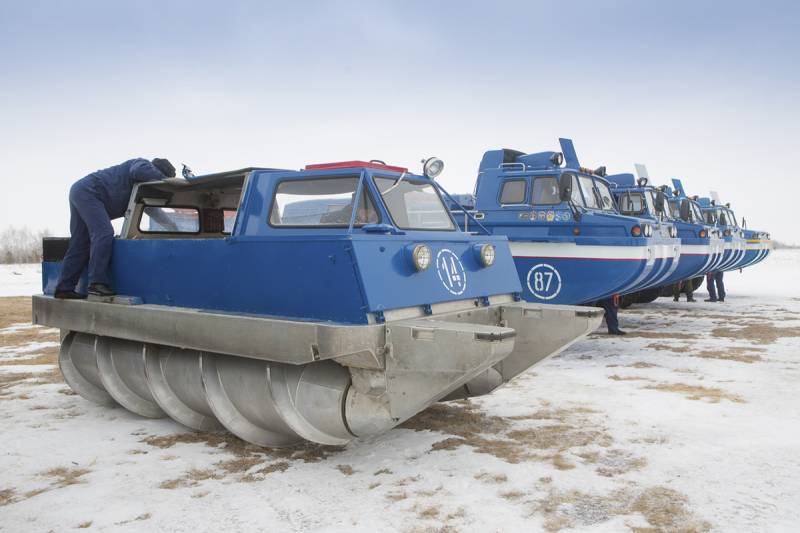
ZIL-29061 auger on the background of wheeled vehicles ZIL-4906, 15 February 2015. Photo by the RF Ministry of Defense
However, in the SKB ZIL rather quickly came to the conclusion that it was not advisable to restructure the existing prototype all-terrain vehicle. So, to increase the total power required new engines, differing in other dimensions. To install them would have to redo the entire body, and therefore a simple upgrade ZIL-2906 did not make sense. However, on the basis of the existing project it was possible to develop a new one, initially taking into account the existing experience of recent tests.
The new auger should have been based on the design of the existing one; moreover, he could be considered a modification of it. In this regard, the next project received the designation ZIL-29061, showing the continuity of development. Also this snow and swamp-going vehicle was given the name PEM-1M, which also reminded of the basic sample.
In the new project it was again proposed to use a bearing welded body made of aluminum panels. The upper part of the hull, which contained the cabin and the engine compartment, was a box of small height with an inclined front wall. The lower part of the body received a wider side belt. Unlike previous machines, a slightly curved bottom was used. In the front and rear parts of the machine there were supports for the rotor-screw propeller. The front pillars were proposed to be equipped with removable triangular skis, facilitating the climb of an obstacle. Rear support screws installed vertically, and not at an angle, as in previous projects.
In the rear of the hull, two VAZ-2103 VAZ-77 automobile engines with an XNUMX horsepower each were installed forward. Once again, an onboard power distribution scheme was used, in which each engine was associated with only one rotor. Each engine was joined by a single-plate dry clutch, a four-speed manual gearbox, a cylindrical reduction and cardan gear. Also in the transmission there were two reverse gears, shafts and final drives. The transmission units passed along the hull and “descended” into the front supports of the rotors. Unlike previous projects, this time the auger gears were in front of the car.
In the ZIL-29061 project, the rotors of the new design were proposed. They consisted of a main cylindrical body and a pair of truncated cones. Inside the new screw there were partitions, with the help of which it was divided into several hermetic compartments. The grouser in the form of a two-way helix was made of a bimetallic (steel and aluminum alloy) plate, which increased its resource several dozen times. The length of the new rotor was 3,35 m, the diameter of the grouser - 900 mm. The elevation angle of the spiral is 35 °.
The base ZIL-2906 had an open cockpit that did not differ much in convenience and comfort. In the new project, the habitable compartment could be covered with hard and soft devices. So, instead of a rectangular frame with windshields, a cap with three slanted windows was used. From above he had a roof with a hatch. Cap performed at the same time with a polygonal top sheet of the body. All this design was hinged to the rear frame and could climb up, providing access to the car. The front inclined part of the body at the same time reclined forward and down. On the front wall of the engine compartment, it was proposed to install a quick-release wall with a pair of small windows. The cap and the wall could be used to install insulated tent.
In front of the cab, in its center, was the driver’s control post. According to the experience of the previous project, the all-terrain vehicle was equipped with traditional controls in the form of levers. The driver had a double set of controls, which provided full control over the two power units and augers. Clutches and gas controlled by a pair of pedals. Equipping the dashboard allows you to monitor the work of all systems.
Behind the driver's seat was the second seat, intended for the doctor. Also ZIL-29061 was supposed to carry two astronauts in the supine position. To accommodate the stretcher, space was provided along the sides of the habitable compartment. It was suggested to load the stretcher with the cap up and the front sheet folded down. For a comfortable ride in the cold season, the cabin was equipped with an autonomous heater.
For a complete solution of search and evacuation tasks, the new all-terrain vehicle was equipped with a set of special equipment. On board, there was a full-time radio station P-809М2 and a portable radio direction finder NKPU-1. Also, the crew, depending on the current situation, could use the entrenching tool, a stretcher, or other medical equipment, medicines, etc. From the point of view of equipment provision with assistance, the auger path hardly differed from other machines of the 490 complex.
According to the creators' idea, the new all-terrain vehicle was to be transported to the place of work by the ZIL-4906 wheeled vehicle. Before loading onto the carrier, it was necessary to remove the front skis, as well as the cap and the rear wall of the cabin. After that, the regular crane of the all-terrain vehicle could lift the auger and put it in your body. Before work began, the machine was unloaded to the ground and equipped with the necessary elements previously removed for transportation. It would take no more than 20-25 minutes to lower or raise auger snow and swamp-going vehicle.
In the framework of the new project, which provided for a change in the power plant and transmission, it was necessary to actually create a new building, which led to a noticeable increase in size. The ZIL-29061 all-terrain vehicle had a length (on the hull) of 4,1 m. The front skis increased this parameter by 760 mm. The width of the car did not exceed 2,4 m, the height along the roof of the cabin cover - 2,2 m. The ground clearance on a solid surface reached 760 mm. Dry weight of the machine was determined at the level of 1,69 t; Curb - 1,855 t. The maximum weight reached 2250 kg, while 400 kg accounted for the payload. The last consisted of four people and a little less than a centner of equipment.
The assembly of the experienced ZIL-29061 auger was completed in late spring 1979. A few days later the car was sent to the fish factory "Nara", whose ponds were already used as a testing ground for new equipment. Until the beginning of August, the all-terrain vehicle was tested in different modes and under differing conditions. It was found that it can rise or descend from the coast with a 23 °. During the mooring tests, the rotor propeller developed thrust in 760 kg. The maximum speed on the water reached 15 km / h. In shallow waters with an oozy bottom, the speed did not exceed 11,3 km / h. It is curious that, together with the ZIL-29061, the base ZIL-2906 passed similar tests. This machine, quite expectedly, showed less high performance.
Were also conducted tests on the roads and sand. In all cases, the new prototype showed acceptable performance. It turned out that the all-terrain vehicle on wet sand can only move sideways, at a speed of no more than 0,5 km / h. But on this terrain there were no problems with maneuverability.
In the winter of 1978, the experienced ZIL-29061 traveled to Vorkuta to check in the harshest conditions. It turned out that the air temperature in -40 ° C does not prevent to start and warm up the car in just half an hour. A few minutes after the start of the movement, the mechanisms warmed up and could work on the desired modes. The cabin heater in 15-20 minutes allowed the temperature to increase by about 30 °. However, a characteristic problem was identified: regardless of the heater operation, the stretcher frames remained cold. The fact is that the metal elements of the stretcher were in contact with the hull and did not have time to warm up: the heat from them was transferred to the hull and the outside air.
After the required preparation all-terrain vehicle showed the highest results. So, on the snowy ground to a depth of 1 m, carrying the full payload, the car accelerated to 25 km / h. Maneuverability recognized satisfactory. Depending on the load and speed, fuel consumption could fluctuate within l / h 20-33.
In the last days of January, the first tactical exercises started with VEK-490 complex machines, including ZIL-29061, near Vorkuta. The ZIL-4906 all-terrain vehicle delivered the screw to a predetermined area, after which it independently advanced to the place of conditional landing of the descent vehicle. In order not to waste time, the crew in advance, before the all-terrain vehicle was lowered to the ground, took seats in the cab, and also started and warmed up the engine. Due to this, the entire stage of descent to the earth with the subsequent departure to the cosmonauts took only a few minutes. Finding conditional astronauts, the crew loaded the recumbent into the car, which also took no more than five minutes. Also in practice, the possibility of moving the triggering apparatus through the snow using a towing cable was checked.
Over the next few months, the rotor-screw all-terrain vehicle and other vehicles developed at SKB ZIL underwent various tests and confirmed the design characteristics. The equipment has shown all its capabilities and has demonstrated high reliability. According to the test results, the ZIL-4906 and ZIL-49061 wheeled all-terrain vehicles, as well as the ZIL-29061 auger snow and swamp vehicle, were adopted for the supply of the Unified State aviation search and rescue service. The development plant received an order for mass production of three types of equipment.
The first serial ZIL-29061 left the assembly shop already in 1981 year. Production was continued. Each 490 search and evacuation complex should have its own auger. It should be noted that the ZIL-29061 was the first domestic all-terrain vehicle with a similar chassis, adopted in operation. Moreover, a new technique was immediately thrown into the most responsible direction.
Shortly after the launch of serial production, SKB ZIL developed a project for modernizing new machines. In 1984, the first prototype received a pair of VAZ-2106 VHXXX engines. Also the machine transmission has been updated. Inhabited compartment was finalized for greater convenience of the crew. In the first months of next year, the rebuilt prototype was checked in Vorkuta. It was possible to get a certain increase in characteristics, but the process of updating the design did not stop.
At the beginning of the 1986, a prototype came out to test, equipped with a VAZ-411 rotary-piston engines with an 110 horsepower. each. Transmission devices have been changed again. Electrical systems were also processed. Due to a different engine design, certain modifications of the existing hull were required. During testing, the ZIL-29061 with new engines accelerated on the virgin snow to 32 km / h, although because of this, fuel consumption rose to 70 l / h. While maintaining high performance, he could carry four people and 150 kg of cargo on board.
In the middle of the 1989 of the year, the space rover tried itself as an agricultural vehicle. Kherson fishing farm them. XX Congress of the CPSU asked him to allocate a snow and swamp vehicle with a mower. Soon, on one of the all-terrain vehicles, there appeared a cutting unit of the KPH-2,1A mower with a hydrostatic drive from the left-hand engine and with the possibility of height adjustment. The extra weight on the front of the machine made it necessary to install counterweights aft.
In February, 1990, the car went to the specified pond, where it was supposed to mow unnecessary vegetation. Thickets in total occupied about 15 ha and consisted of reeds up to several meters high. At the bottom of the reservoir there was a layer of silt 700 depth mm. In such conditions only the auger could really work. While working, the driver and the car had to face serious difficulties. Raised dust and fluff forced the driver to use personal protective equipment, and in addition, fell into the filters and radiators. Every hour I had to clean them. Moving at an average speed of 5 km / h, the all-terrain vehicle with a mower for 38 h coped with the task and freed the pond from unnecessary vegetation.
According to the results of this work, the management of the fishing organization made a proposal to create a specialized screw-walker suitable for use in the national economy. Perhaps SKB ZIL would undertake such work, but the collapse of the USSR prevented the implementation of promising proposals.
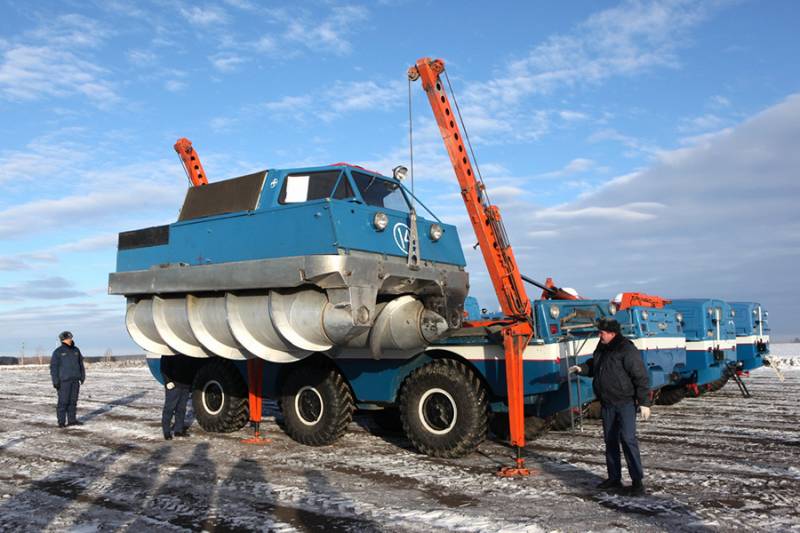
The all-terrain vehicle ZIL-4906 unloads the ZOR-29061 auger car. Exercises of the search and rescue service, 18 February 2015 g. Photo of the Ministry of Defense of the Russian Federation
A few years later the plant them. Likhachev received another lucrative offer. One of the major companies in the oil industry wanted a rotor-driven snow and swamp-going vehicle for transporting people and goods in hard-to-reach areas of Siberia and the Polar region. The project under the designation ZIL-29062 was developed, but it did not come to mass production. However, the oilmen were not left without special equipment. The company nevertheless ordered the PEK-490 complex with several machines, including with the ZIL-29061 auger.
According to known data, full-scale mass production of cars ZIL-29061 lasted from the early eighties to the early nineties. After that, the pace of production declined sharply. At the same time, the manufacturing plant had new customers in the face of various civil or commercial structures. To date, several customers in total have received at least two dozen screw augers.
The main operator of such technology is currently the Federal Aerospace Search and Rescue Directorate at the Ministry of Defense. At the supply of this structure consists of a large number of all-terrain vehicles of the brand ZIL of several types. Using the search and evacuation complexes "490", the Office helps to search and return home astronauts who have landed. Not a single landing of the last decades, carried out on the territory of our country or nearby states, has done without PEC-490 machines.
Search and evacuation complex "490", despite its age, still remains in operation and solves the tasks. There is no replacement yet. Apparently, the ZIL-4906 family of vehicles and the ZIL-2901 auger passes will still meet astronauts and solve other special tasks for which uniquely high mobility and maneuverability characteristics are required.
Based on:
https://popmech.ru/
http://denisovets.ru/
http://kolesa.ru/
http://gvtm.ru/
R. Danilov Serial auger / / Technique and weapons. 2011. No.6.
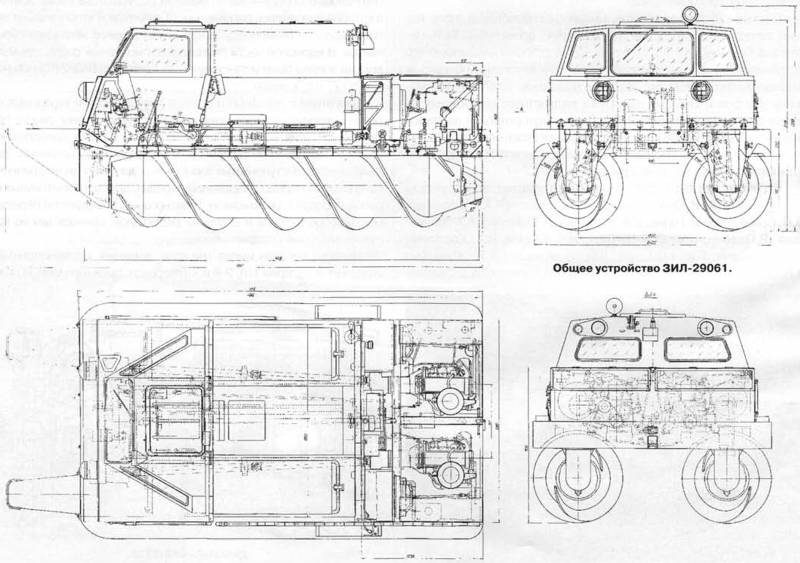
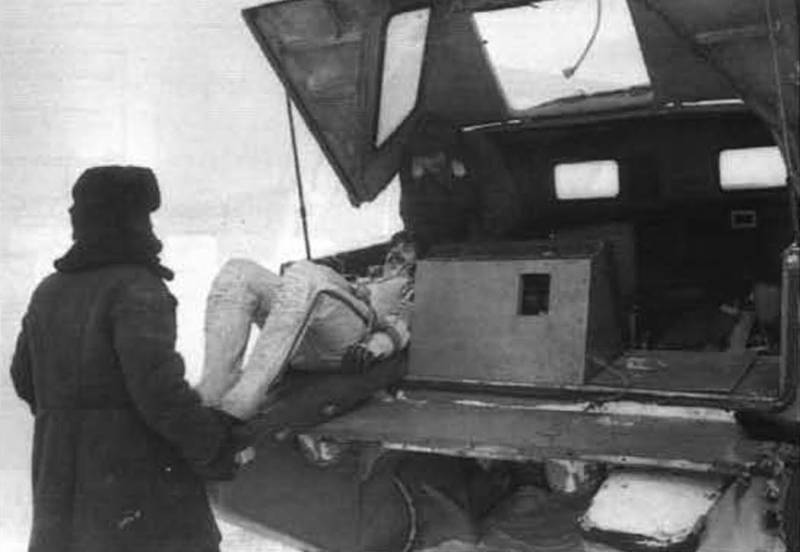

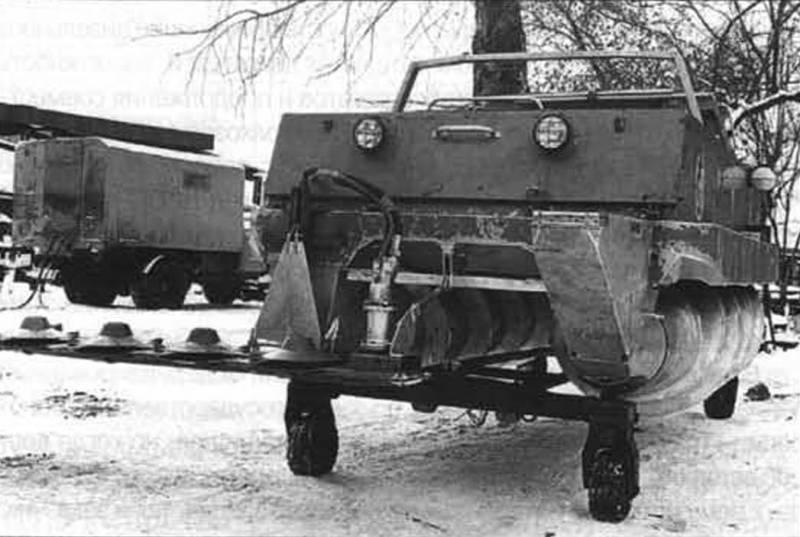
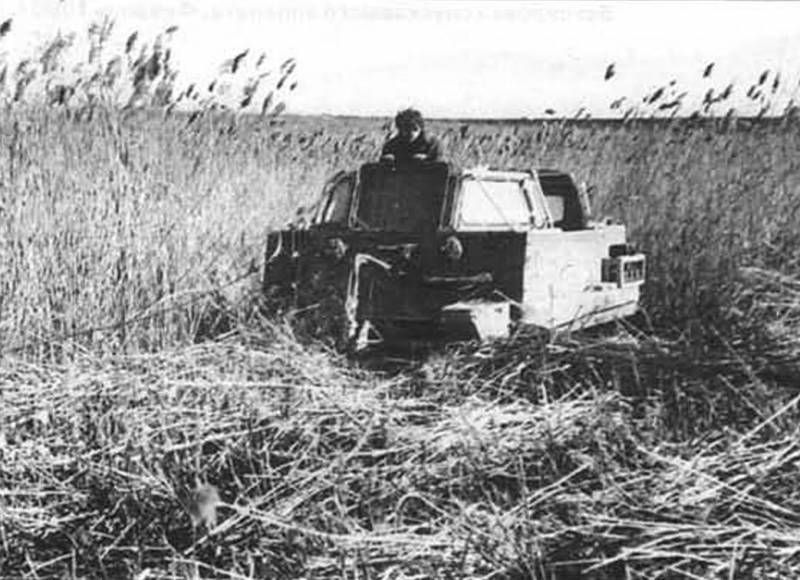
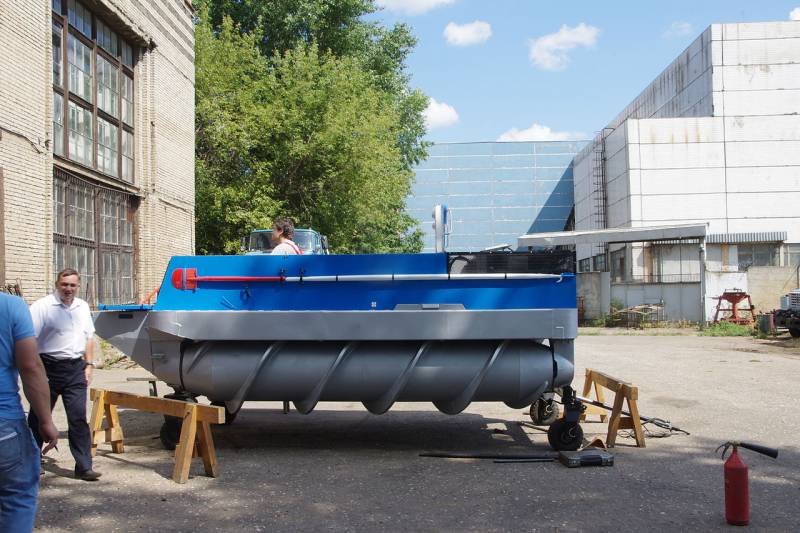
Information